

Unifying public electric vehicle chargers. One app, more chargers, across Thailand.
Figma
GPT-4o
Adobe Premiere
Adobe Photoshop
Individual Project
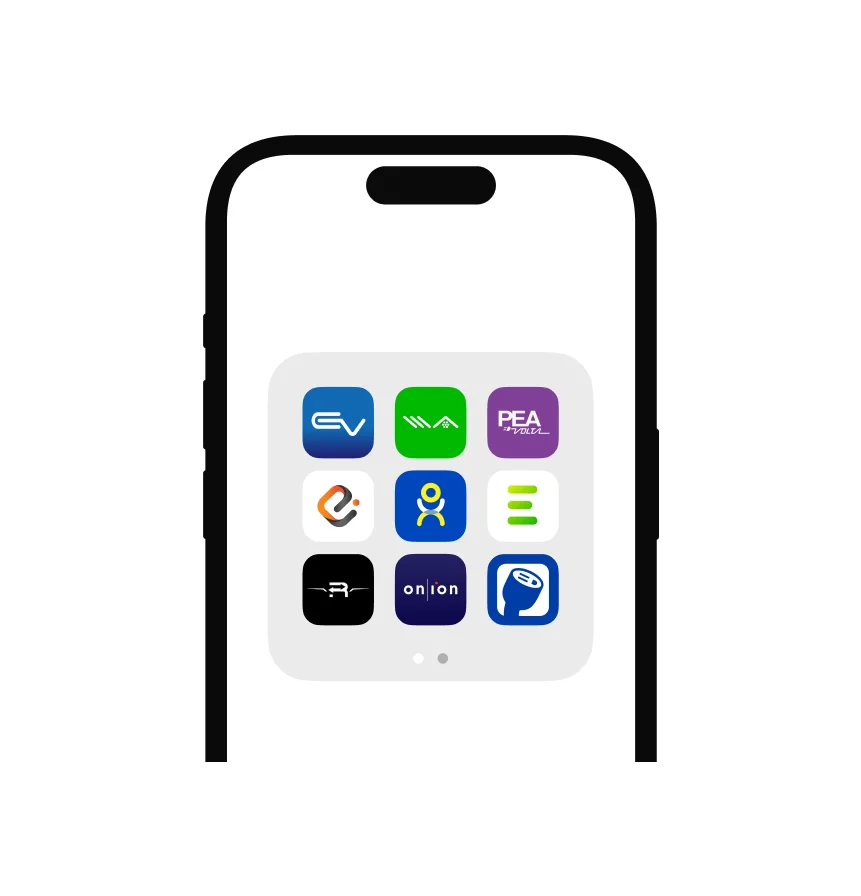
As electric vehicles rapidly gain popularity in Thailand, so does the expansion of public EV chargers. But with growth comes fragmentation.
Each charging provider operates its own app—with a different interface, user journey, and payment method. Drivers are forced to relearn how to charge depending on where they go.
For many EV drivers, the biggest obstacle isn't finding a charger—it's navigating the messy ecosystem around it.
Growth in EV registrations in Thailand from 2022 to 2023.
Charging plugs available nationwide as of December 2024.
major public EV charger providers—each with their own app as of January 2025.
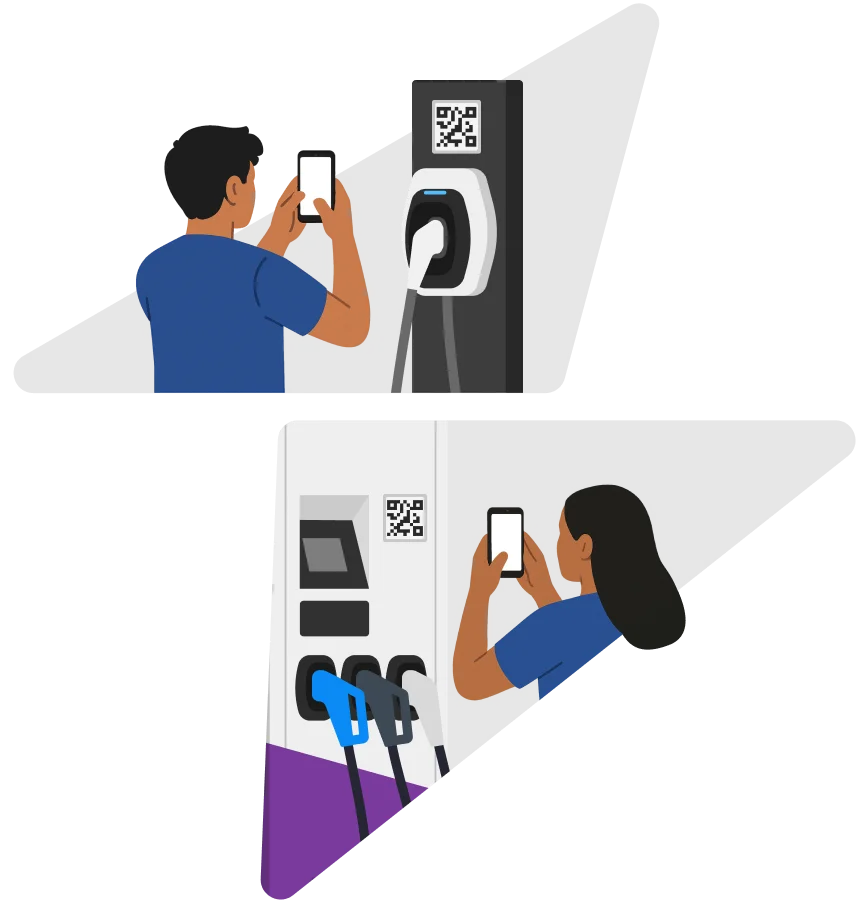
Amper simplifies EV charging in Thailand by unifying fragmented networks into a single platform—allowing drivers to discover, book, and charge across providers, all in one app. Amper aims to make charging more transparent and reliable by empowering users with reviews, issue reports, and community-driven updates.
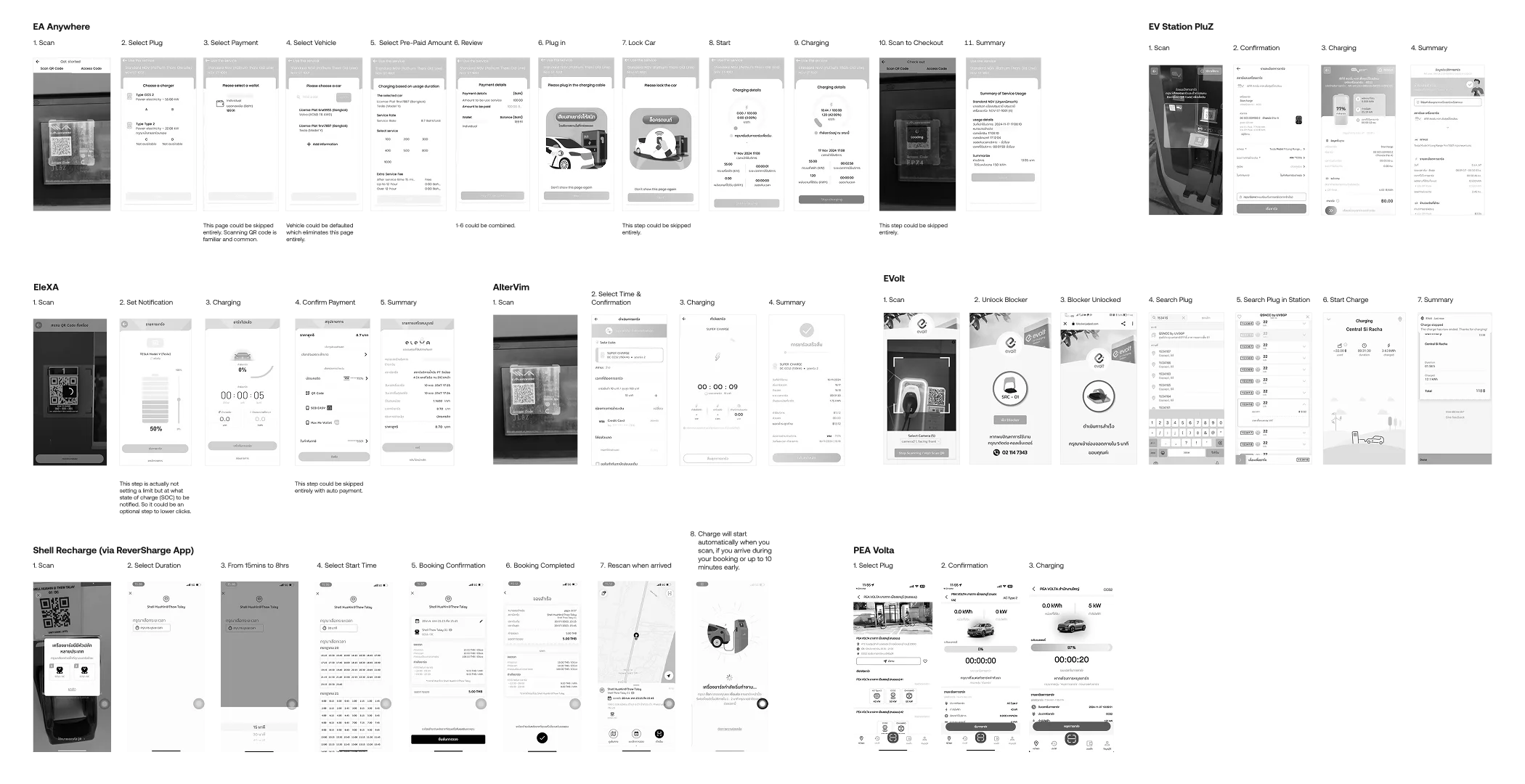
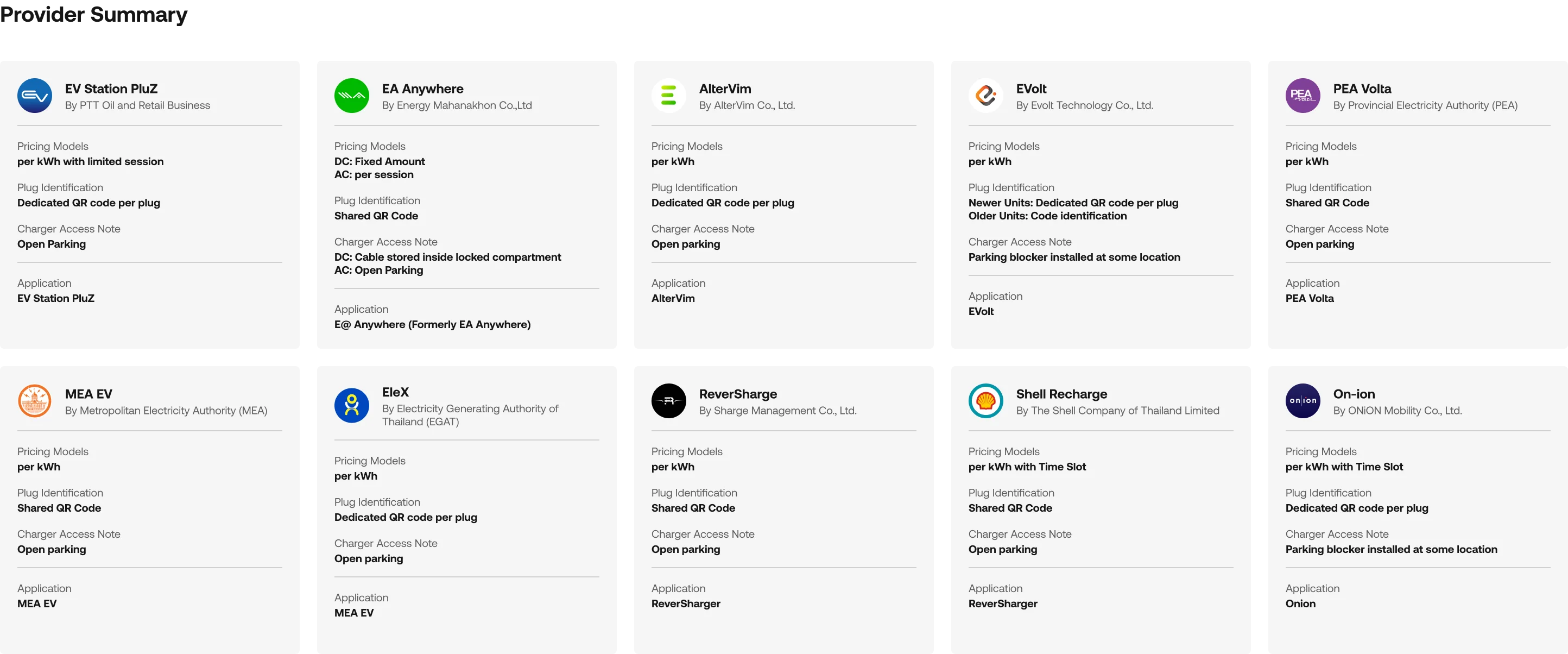
A detailed studies of Thailand's major public EV charging providers reveals four distinct user journeys—each shaped by the provider's pricing model. These pricing types impact not only how users are billed, but also how charging sessions are started, monitored, and ended.
Charged based on the total electricity (kWh) delivered. Users can start charging freely and stop at any time, or the session may end automatically if capped by the provider.
Providers: EV Station PluZ, EleXa, PEA Volta, MEA EV
Users are charged per kWh but must pre-select a charging duration. The session ends automatically once the reserved time is up, regardless of whether the charging goal is met.
Providers: AlterVim, Shell Recharge
A flat rate is charged for a fixed time window (e.g., 50 THB for 1 hour). The total energy received depends on the charger's speed. Charging ends when time expires.
Providers: EA Anywhere (AC)
Users prepay a fixed amount (e.g., 300 THB) and are charged by kWh until the prepaid value is used up. The session ends automatically when the spending cap is reached.
Providers: EA Anywhere (DC)
In addition to pricing models, user interactions and hardware behaviors can vary significantly by provider and location, impacting the overall experience.
Some chargers offer a dedicated QR code for each plug, auto-selecting it upon scan. Others use a shared QR code, requiring users to manually pick a plug in the app. A few older chargers skip QR codes entirely, relying on unique numbers for identification.
Certain setups require extra steps before charging. Some units need users to prepay and unlock a compartment to access the cable. Some mall-based chargers (e.g., Onion, EVolt) may require users to lower parking blockers via the app before plugging in.
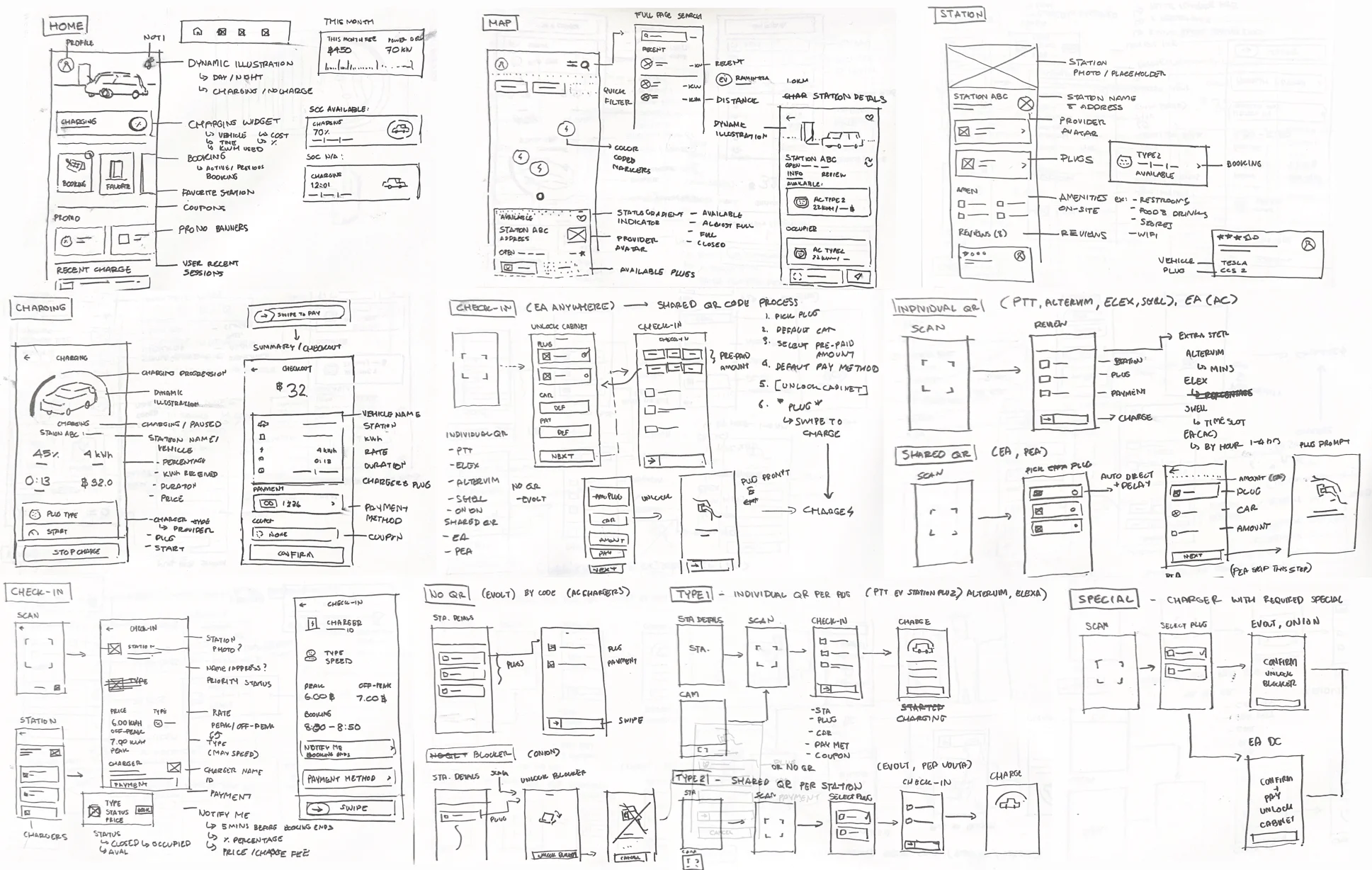
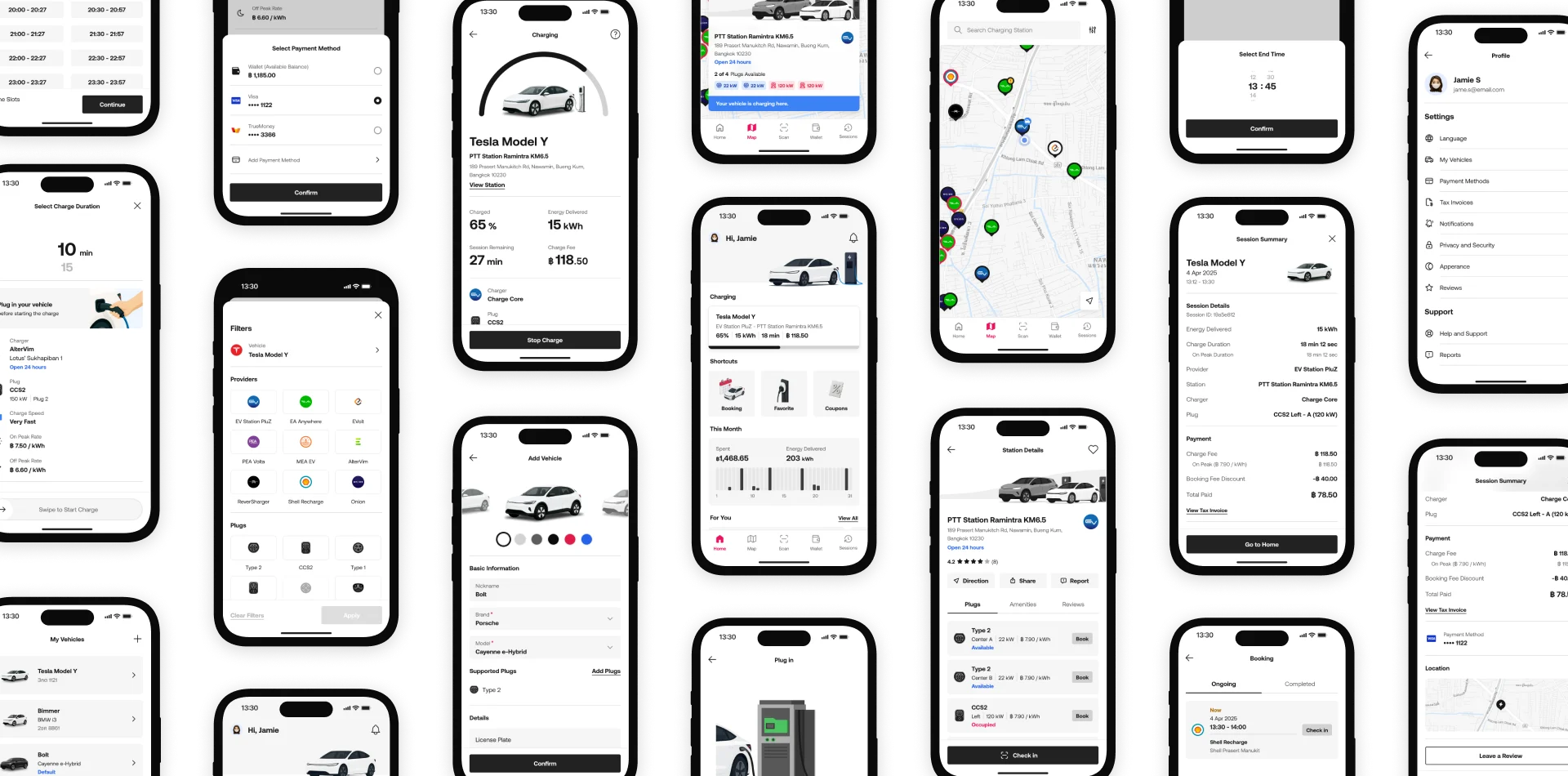
The Home screen offers a centralized view of your EV activity. Users can easily track active charging sessions in real time and monitor monthly summaries across all linked vehicles. Whether you're charging now or reviewing past usage, Amper gives you a clear, organized snapshot the moment you launch the app.
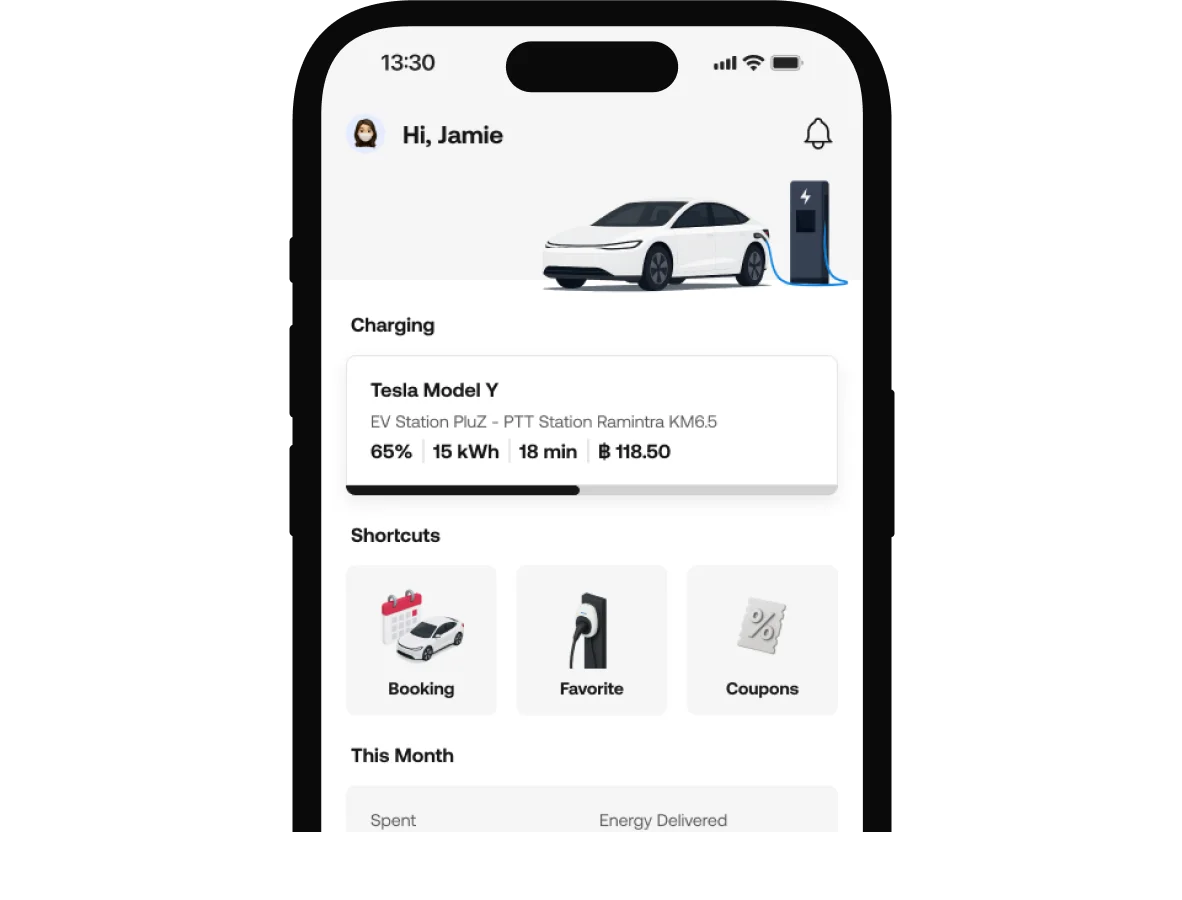
While Charging

Default
All supported chargers—across multiple networks—are unified into a single, easy-to-navigate map. Real-time availability is color-coded for quick scanning, while filter options help users narrow down stations by plug type, charging speed, availability, and more. Tapping on any station provides instant access to detailed info and community-generated updates, making charger discovery faster and more reliable.
Each station page provides transparent, standardized information including real-time status, available plug types, pricing structure, and operating hours—ensuring a consistent experience regardless of provider.
Community-powered features enable users to suggest corrections, report issues, confirm fixes, and share reviews. By giving users a voice, Amper turns every driver into a contributor—creating a more transparent, dependable, and trustworthy charging ecosystem for all.
Users can add and customize their vehicle profiles by selecting the exact make and model—ensuring compatibility with available chargers. They can also add additional supported plug types to their vehicle profile, allowing Amper to tailor charger recommendations and check-in flows to match their real-world setup.
Designed to fully support each charging provider's unique pricing models and hardware configurations, while improving overall efficiency through clearer information on a visually consistent interface with fewer clicks and screens.
Chargers with a dedicated QR code for each plug retain a simple check-in flow—just scan and charge. In Amper, the EleXA journey is improved by removing a misleading full-page step that asks users to select a battery percentage—not to limit charging, but only for notification. This option is now reduced to a compact, clearly labeled action list within the confirmation page.
This adjustment makes room to display station and plug details—missing in the provider's app—so users can double-check before charging, reducing the risk of checking into the wrong plug on the same unit due to an unintended scan.
Chargers with a shared QR code across all plugs still require users to manually select a plug. But with Amper, users gain more freedom when paying for their charge by connecting cards or other e-wallets.
This eliminates the need to top up individual provider wallets in fixed amounts—often through unreliable flows—and avoids ending up with scattered balances across multiple apps that are used only a few times a year and easy to lose track of.
The original booking journey required users to first choose how long they wanted to charge before selecting available start times. While functional, this sequence—paired with unclear copywriting—doesn't reflect how most people approach scheduling. When planning a charge, users typically think first about when they want to start charging, and the duration becomes a result of selecting the end time.
In Amper, the booking flow was redesigned to match this natural behavior. Users now select a start and end time, and the session duration is automatically calculated. This small shift makes the process more intuitive, reduces friction, and better supports how drivers actually plan charging.
Amper redesigned the check-in journey for EA Anywhere chargers originally with the most clicks and screens—into one that's efficient and comparable to other providers. Vehicle selection, payment method, and amount selection are now merged into a single confirmation page with default selections to minimize user effort. This is followed by a combined instruction screen guiding users to retrieve the cable from the side compartment and plug in.
This redesign reduces the minimum number of clicks from 12 to 5, and screens from 7 to 3—without removing any required selections mandated by the provider.
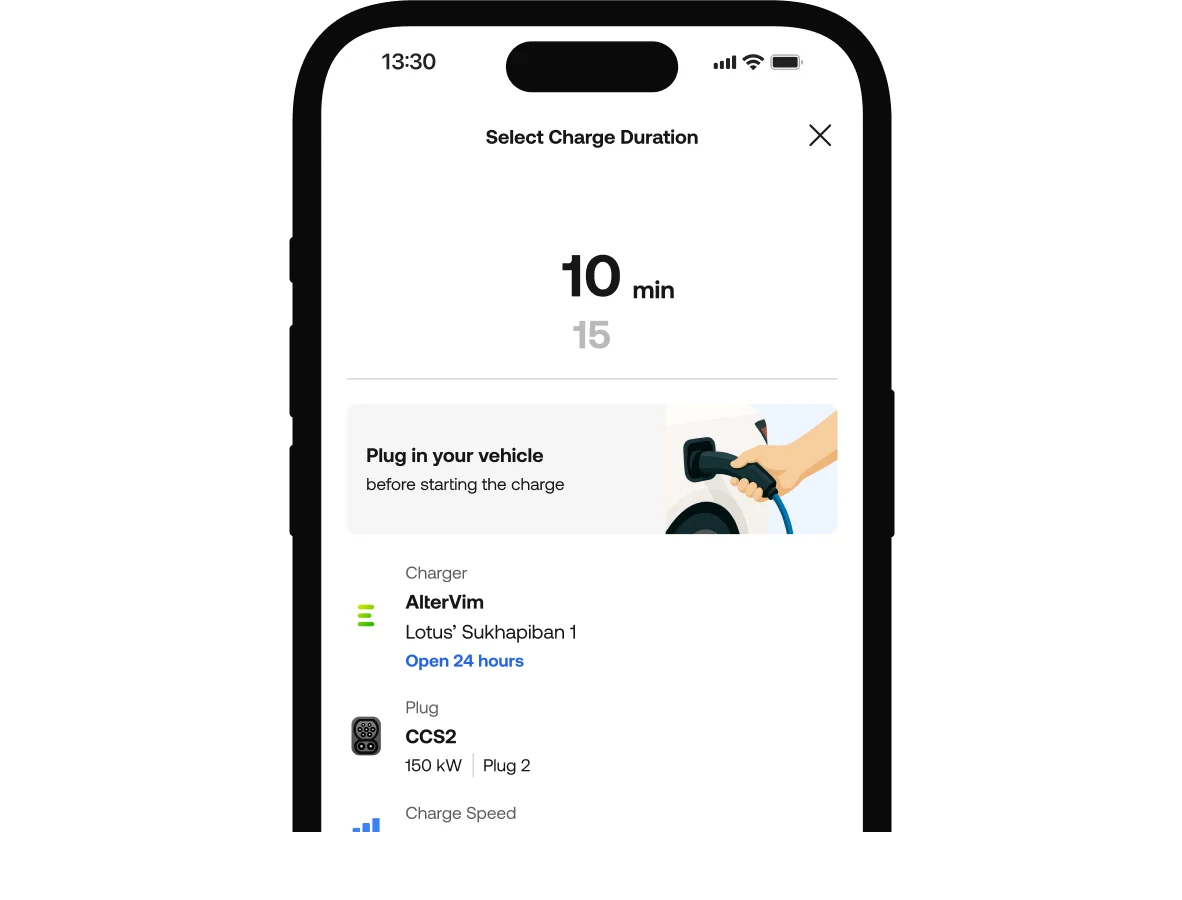
AlterVim
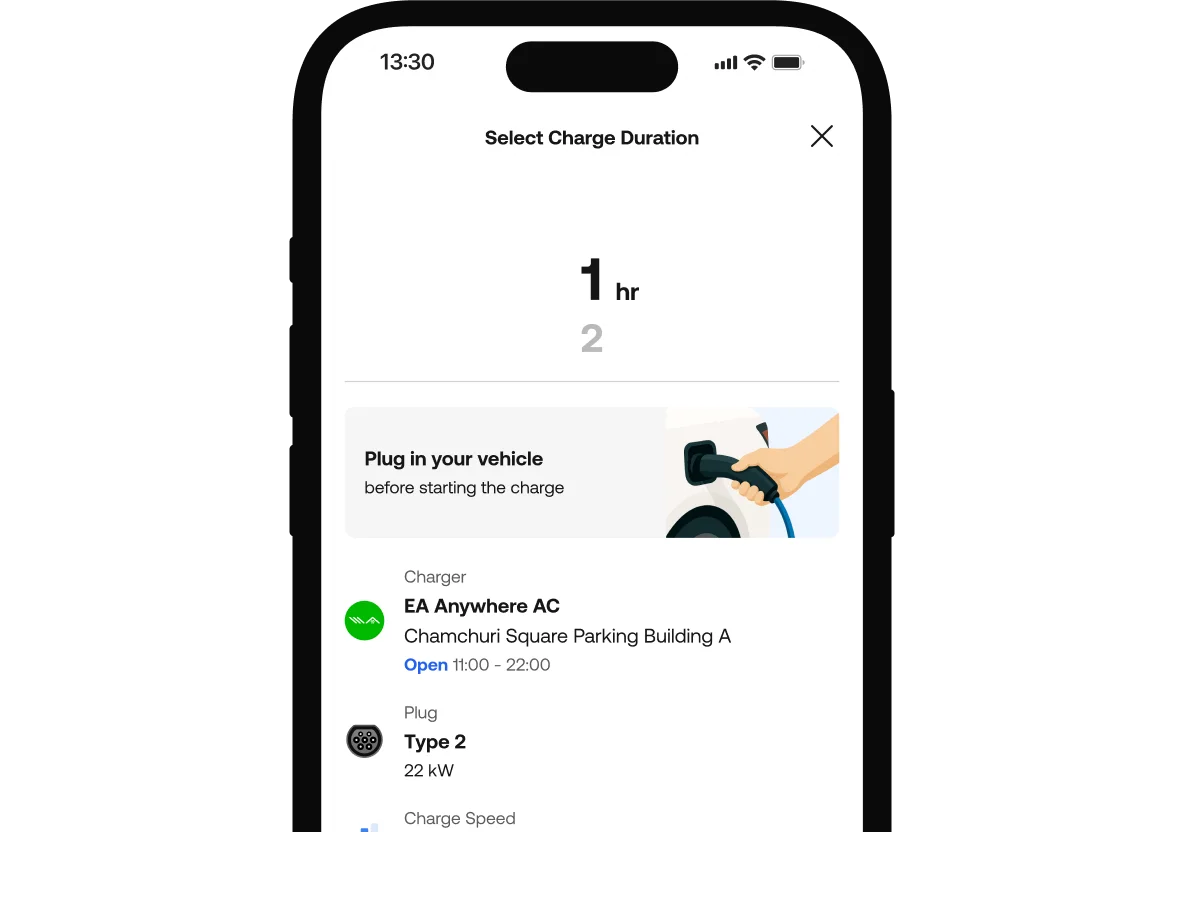
EA Anywhere (AC)

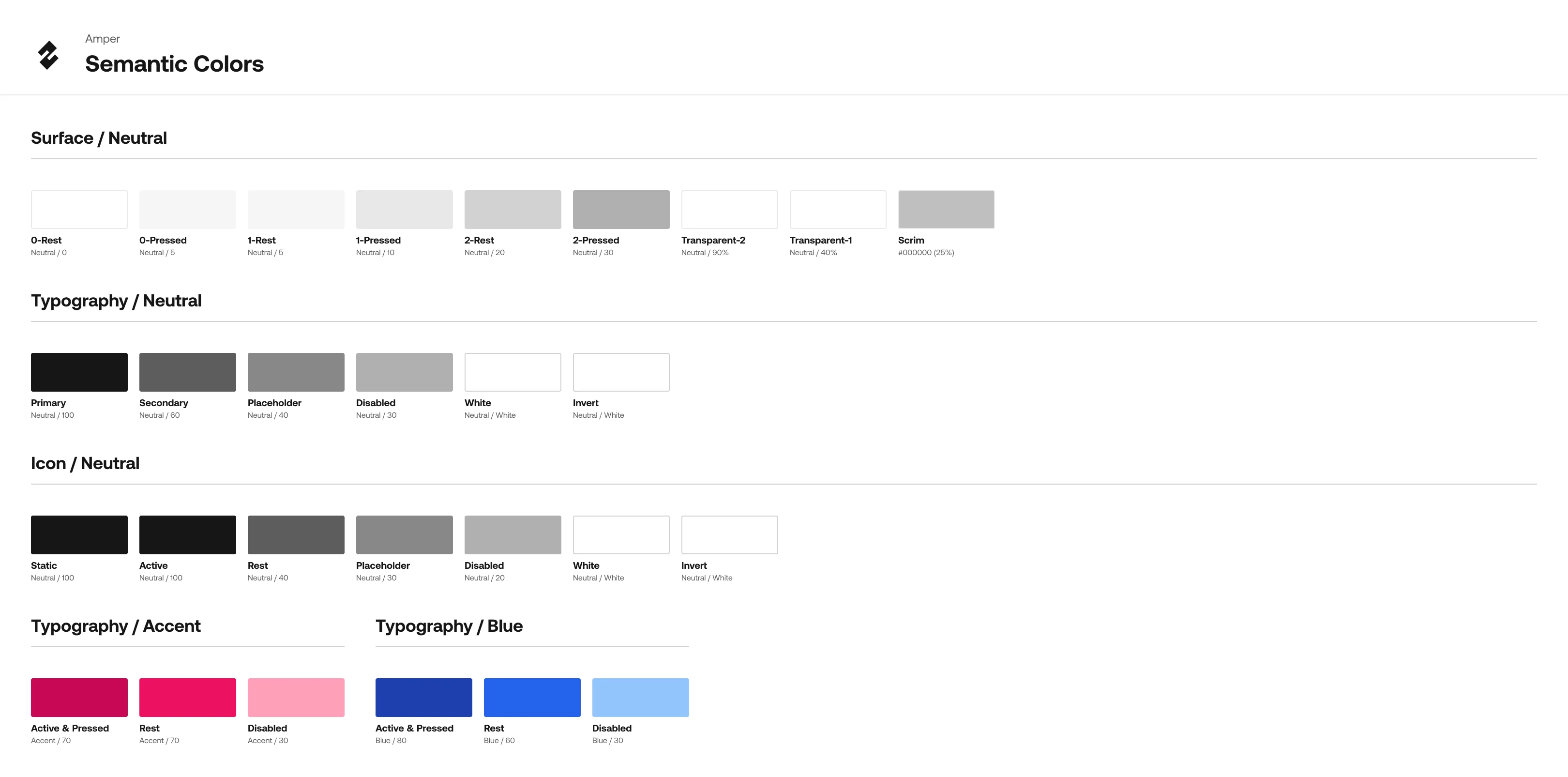
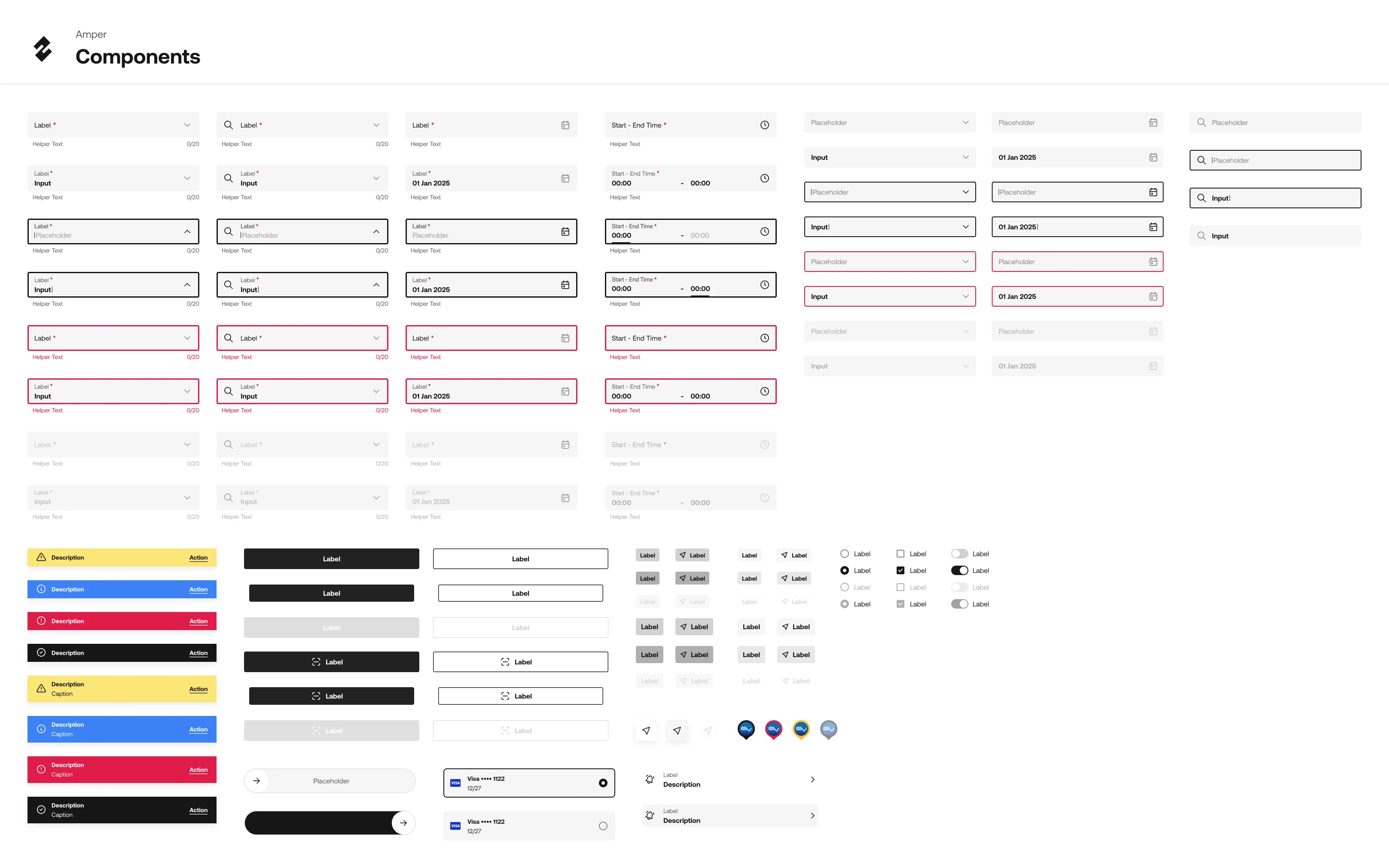


Unifying public EV chargers was an idea I had been thinking about and sketching for some time, but never fully pieced together—until this project. It became the first project where I had to deeply understand not just the user journeys on the screen, but also the hardware and operational differences between providers that directly shape those journeys.
What I initially expected to be a smaller, faster project turned out to be far more complex than anticipated. Designing a check-in experience that remains efficient and consistent across varying providers truly challenged my design thinking. It pushed me to consider real-world constraints, provider needs, and user mental models—all at once. In the end, it was incredibly rewarding to see how everything could come together into a cohesive and user-friendly solution.
© 2025 Nathapong Nurae. All rights reserved.